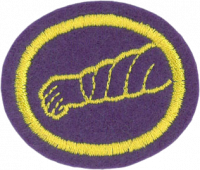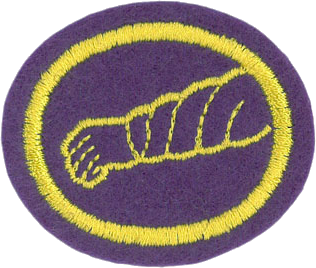Difference between revisions of "AY Honors/Health and Healing (GC)/Answer Key/es"
(Created page with "<noinclude>") |
(Created page with "===Citas del Espíritu de Profecía===") |
||
| Line 48: | Line 48: | ||
</div> | </div> | ||
| − | + | ===Citas del Espíritu de Profecía=== | |
| − | === | ||
| − | |||
<div lang="en" dir="ltr" class="mw-content-ltr"> | <div lang="en" dir="ltr" class="mw-content-ltr"> | ||
Revision as of 23:42, 27 March 2024
Nivel de destreza
2
Año
1928
Version
27.04.2024
Autoridad de aprobación
Asociación General
1
Este requisito se asegura de que el Conquistador es lo suficientemente maduro para entender y apreciar las lecciones enseñadas en esta especialidad.
2
Bible texts
|
Matthew 4:23,24 |
Matthew 17:14-20 |
Mark 8:22-26 |
Luke 6:6-11 |
Luke 17:11-19 |
Citas del Espíritu de Profecía
- The Ministry of Healing Chapter 16: Prayer for the Sick.
- Desire of Ages Chapter 36: The Touch of Faith
Procedure for Anointing the Sick
The procedure for anointing the sick is outlined in the Minister's Manual. The anointing service is performed for anyone who is seriously ill. While it should not be used for minor ailments, it should also not be reserved only for those who are dying.
"Is anyone among you sick? Let him call for the elders of the church, and let them pray over him, anointing him with oil in the name of the Lord. And the prayer of faith will save the sick, and the Lord will raise him up. And if he has committed sins, he will be forgiven." (James 5:14, 15).
Note that the verse asks, "Is anyone among you sick?" rather than "Is anyone among you dying?"
The service is performed by a pastor or in his absence, by an elder (but with the pastor's approval). The person officiating should be accompanied by a few elders, and anyone who has a special gift for prayer. It can be performed in a home, at the church, in a nursing home, or in a hospital. If it is done in a hospital or nursing home, it should not interfere with the medical work being done there.
Normally, non-Christian friends and family are not invited to the service, but they should not be asked to leave if they are present already.
Before the service, the recipient should be prepared by a careful examination of his or her own heart. This should include a confession of any sins to the Lord. "If I regard iniquity in my heart, the Lord will not hear" (Psalm 66:18). The recipient may also be encouraged to read the chapter "Prayer for the Sick" in Ellen White's The Ministry of Healing. (see the Spirit of Prophecy references above).
The service begins when the pastor explains the purpose of the service to all present, and how the service will be performed. The recipient may be asked to give a testimony. If the recipient is not too sick, time should be taken to read passages from the Scriptures explaining the prerequisites for divine healing:
- Belief that God can and does heal.
- The confession of sin.
- Commitment to healthful living. It is presumptuous to ask God to heal us if the person intends to continue the behavior that caused the illness in the first place.
- Willingness to use human means. God does work miracles, but sometimes he chooses to do this through human agents. He may already have chosen a doctor through whom the afflicted person may be healed. It is not a sign of faithlessness to seek healing through human effort."Every good gift and every prefect gift is from above" (James 1:17)
- Trust God's answer. Sometimes God answers quickly, sometimes slowly, and sometimes He answers "No." If the sick person is not healed immediately (or is not healed at all) it is not a sign that God was unwilling to heal or that the person lacked faith or spirituality. The scripture reading should end with the assurance that everything has been placed in God's hands and that God can be trusted.
Everyone then kneels, and prayer begins. The anointed may pray first, followed by the elders. The pastor prays last as he dips his finger into a vial of olive oil and rubs a small amount on the recipient's forehead. The oil symbolizes the Holy Spirit touching the sick person in a special way. Seventh-day Adventists do not follow the practice of applying oil to the part of the body that is afflicted.
As soon as the prayer is ended, the anointing party leaves. If fellowship is desired, it should take place before the anointing service. The party should leave while the spirit of reverence and the presence of God prevail.
3
Once health professionals are certified or licensed to practice, they are required to keep their educations current by enrolling in "Continuing Professional Education" or CPE. They must complete a specific number of hours of coursework every year. During these courses, the professionals review current practices and are exposed to the latest techniques. These courses are often sponsored by their employers, and often involve overnight trips taught at resorts or spas. Employers provide this "perk" because they wish to retain their employees.
4
4a
4b
4c
4d
4e
4f
4g
4h
The interview should take about 20-30 minutes to complete. You may need to set up an appointment with these professionals, and they may ask that you come to their facilities for the interview. Be prompt. It is also courteous to send your interviewees a card or a gift as a thank you. If the interview is conducted at the medical facility, you may be able to meet much of requirement 5b as well.
5
5a
5b
5b(1)
5b(2)
5b(3)
5b(4)
5c
5c(1)
5c(2)
5c(3)
5d
5d(1)
5d(2)
5d(3)
5d(4)
5d(5)
References
- Seventh-day Adventist Minister's Manual, Chapter 41: Prayer for the Sick.


